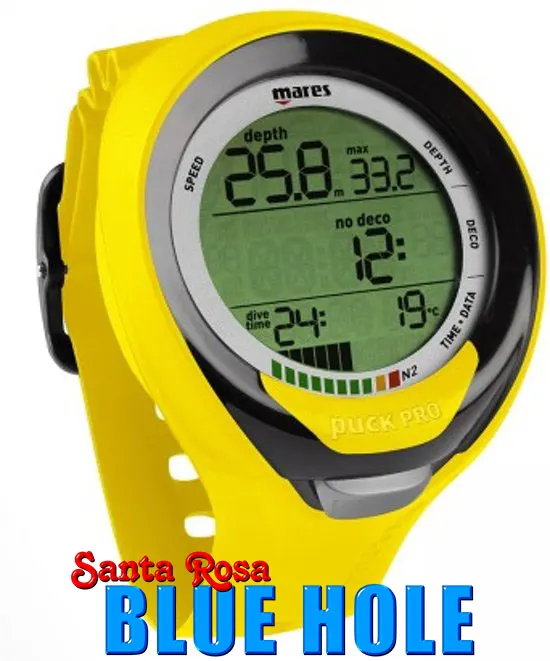The dive computer is very popular among divers. A dive computer can make driving safer, more fun, and easier. The computer shows a lot of information during the dive, such as decompression data, dive time, depth and alerts you with alarms. It is also possible to download information before or after diving like previous dives. Almost all dive computers have a logbook and profile that can be read on a tablet or computer. It is a useful device that can take care of many difficult calculations.
However, the best advice is not to rely solely on a dive computer. If you are going to dive with a computer you have to know how it works and what information it provides. It is also necessary to make good planning before the dive. You should also be able to perform the appropriate calculations through the dive tables or the computer. This is learned during diving training.
The calculations made by a dive computer, however good the formulas are, remain estimates. Diving with a dive computer has the risk, especially if you do several dives in a day or week, looking for the limits. Don’t do this and always stay in the safe margin and don’t look for the limits! In addition, a computer may fail during diving, so it is advisable to have a pressure gauge or analog submersible watch as a reserve.
Different types and models of dive computers
There are different models of dive computers. There are devices that can be worn on the wrist, wrist dive computers. These have a big screen (big display) and a standard clock format that you can take in your spare time. There are also computers that are integrated into the diving console, including or not a pressure gauge and a compass.
A dive computer can also be integrated with air or gas. This means that the computer is connected to a hose or wirelessly through a transmitter to the first stage of the dive bottle and therefore the pressure is displayed on the screen. In fact, an integrated dive computer continuously calculates how much air is still available and notifies you if you have to ascend.
The Galileo Luna is an example of a wirelessly integrated air dive computer. The Mares Mission Puck 2 is an example of a gas dive computer built into the console
The functions of a dive computer
A dive computer measures at least the ambient pressure (depth) and elapsed time (of diving). Based on that and by means of the determined data, the computer calculates the time of the safe dive, the depth of the dive and the necessary decompression stops (the depth and time) based on its diving profile. The computer continuously calculates throughout the immersion the saturation of nitrogen in the different tissues of our body. There are too many mathematical functions and models to treat them all here.
A dive computer is easy to operate and read. Some basic features that must be present in each dive computer are:
- The depth
- Depth
- The remaining time for free ascent (without decompression stops)
- The immersion time (underwater time)
- Battery indicator
Dive computers that only provide the aforementioned information are called bottom timer (immersion timer). Modern computers can indicate much more, depending on the model, on the following data (or offer the ability to view the data):
- The speed of ascent (and the speed of descent)
- The water’s temperature
- A logbook (data from previous dives)
- If decompression stop is necessary (depth and time)
- No-fly time (the time before you can fly again)
- A compass
- Immersion profiles
- Personal settings
- Safety stops and deep stops
- Desaturation time
- Planning tools
- The pressure (integrated air/gas) in the diving bottle
- Estimated remaining immersion time (integrated air/gas)
- Air, gas/nitrox or gauge dive mode
- Date and Time
Always use a dive computer rightly!

